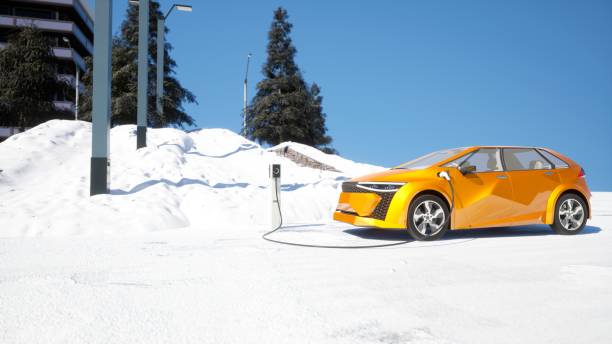
Cattaraugus County is in the middle of a challenging winter, forcing us to make the usual adjustments: heaters are cranked up, sidewalk salt is spread, and cold weather clothing has taken up their seasonal residency in your wardrobe. In the meantime, perhaps you’ve noticed your electric vehicle isn’t humming quite as harmoniously as it was during the summer and fall.
Considering that regular car batteries already encounter difficulties in cold weather, it’s no wonder electric vehicles need extra care during the winter season. Your EV’s range and performance might experience a slight reduction until the temperature improves, but by following these tips, you can confidently navigate the season until it transitions to spring.
Don’t Let Your Battery Dip Below 20%
During the winter, EV owners may experience a 20-30% reduction in range due to lower battery performance and increased energy consumption. This is completely normal, as the lithium ions in electric batteries tend to slow down in colder temperatures. Ultimately, EV batteries aren’t that different form the human body: they prefer warmer weather, with optimal temperatures of 59-95 degrees Fahrenheit.
When winter rolls around, there are a few precautions you need to keep in mind. Firstly, it’s crucial to ensure that your battery doesn’t dip below a 20% charge. Cold weather can significantly affect the performance of your battery, so it’s best not to risk letting the charge drop too low. Think of it like charging your phone or any other electronic gadget – make sure to plug in your electric vehicle when it’s not being used.
Park Indoors When Possible
If you have access to a garage or storage unit, it’s a good idea to park your car inside during the winter months. However, if street parking is your only option, consider starting the engine at least once a day instead of leaving it parked for long periods. And if you find yourself in a position where you have no choice but to leave your car idle, make sure the battery has at least a 70% charge to avoid any potential deterioration.
It’s also important to steer clear of rapid (or DC) charging. While it may not be the most convenient option, charging at slower speeds during colder weather proves more advantageous for the battery’s well-being. Opting for Level 1 charging, known for being the slowest alternative, is actually the recommended choice when facing chilly temperatures. Moreover, if you’re operating a hybrid or plug-in vehicle, remember to activate ECO mode for optimal efficiency.
Monitor Heat Levels
When preparing to go out for work or errands, heat up your electric vehicle beforehand. By gradually increasing the temperature, you can minimize the strain on the battery when you begin driving. If possible, continue to charge your car while heating it, as the heater will absorb power from the charger instead of the battery, maximizing your daily range.
Once you’ve warmed up your car, it’s crucial to be conscious of the heat you’re using. Instead of solely relying on the heater, give some thought to utilizing the heated seats to keep yourself warm. It’s important to remember that excessive heat can affect your car’s range. Finding a balance between your comfort and not overusing the heater is vital. Keep in mind, your car’s heater dislikes winter just as much as you do.
Remember That We’re Always Here to Help
If your vehicle is still feeling the effects of winter, make a trip to Rick Bokman Buick GMC Cadillac today. From battery replacements to oil changes, our team of service professionals is here to get you to the spring. Remember that your tires also play a huge factor in extending your range – so make sure you equip your EV with a proper set of winter tires.
Visit us today and explore the most exciting EVs out there, including the new, all-electric 2024 Cadillac LYRIQ SUV, or GMC’s latest Hummer EV. After all, the future is bright; reserve your spot in it today.






